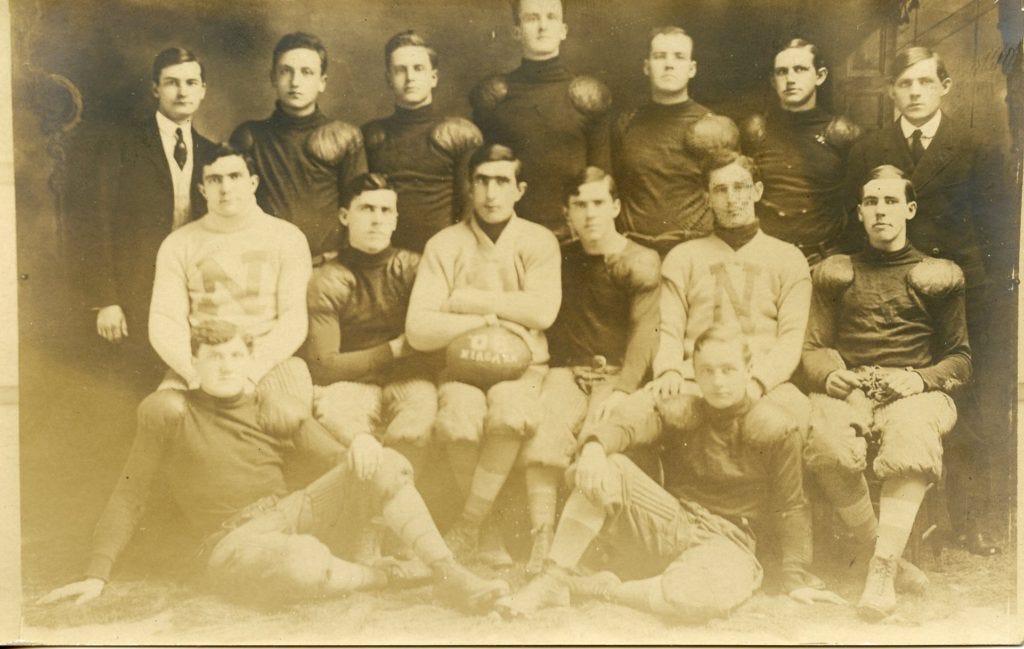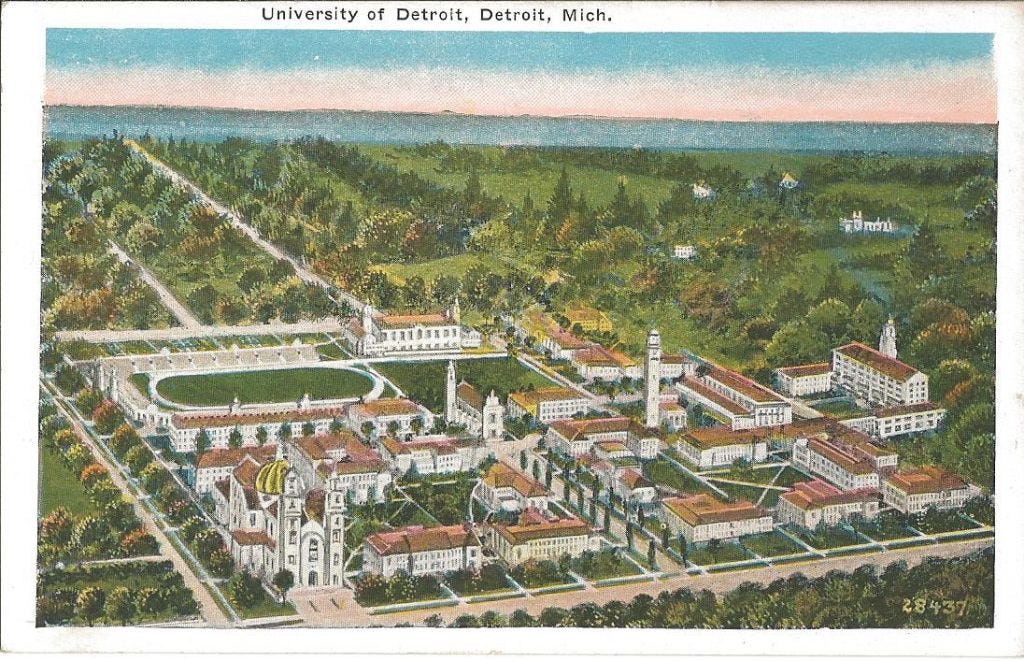Life Without Football: Colleges that Dropped the Game
Since it increasingly appears we will not have a college football season in 2020, it is worth taking a look at the colleges and universities that have not cheered for their boys on the gridiron for decades. Numerous schools that once fielded football teams dropped the sport over the years. Some did so because the school itself merged or closed. Many dropped football after WWII when the cost of fielding teams increased with the larger rosters needed to support two-platoon football. The onset of televised games during the same period also meant that football fans no longer had to sit in the bleachers at the local stadium to enjoy a game. The growth of professional football also hurt attendance at some schools.
Regardless of the reasons, let's take a look at some schools that once battled on the gridiron, but no longer field teams. All are schools for which I acquired an old postcard or ticket stub that testifies to their one-time football exploits.
Racine College
The image of men standing on an apparent baseball field is not meant to evoke memories of the great athletic teams fielded by Racine College. Still, it is the closest thing I have to an image worthy of the location's place in intercollegiate football history when the Racine Purple Stockings lost 1-0 to Michigan on May 30, 1879, in the first intercollegiate football game played in the Midwest. Racine College played until 1887 when they transformed into a secondary school, playing at the prep level after that.

Medico Chi
Founded in 1848, the Medico-Chirurgical College absorbed dental and anatomy schools over the years, before the University of Pennsylvania absorbed Medico-Chi in 1916. The 1905 Medico Chi team likely included a mix of undergraduate and graduate students since one could enter many medical schools in those days without having earned an undergraduate degree. A number of other medical, pharmacy, and law schools fielded football teams at the time as well.

Niagara
Niagara fielded its first football team in 1897, playing off and on before taking their final falls in 1987. Not much seems to have happened in all those years, and Purple Eagles flew their last with few noticing they were gone.
Vermont
The first collegiate football game in Vermont came in 1886 when Dartmouth met the University of Vermont and State Agricultural College, a game Vermont lost 91-0. Unable to rise far above those ashes, the Catamounts dropped football following the 1974 season. Doing so left Vermont as the only state other than Alaska without an FBS or FCS football team.

City College of New York
The City College of New York was among college football's pioneers, playing its first game in 1872, only three years after the Rutgers-Princeton soccer match that purports to be the first collegiate football game. Like many others that dropped the sport, CCNY never amounted to much on the gridiron. CCNY did not play football between 1902 and 1920, but restarted and played through WWII. The Beavers dropped the sport in 1950 after going 1-7-1 against a less-than-ambitious schedule.

Creighton
Creighton football arrived on the scene in 1900. The Bluejays played in the competitive Missouri Valley Conference from 1928 to 1942, winning two MO Valley championships. Like some schools that dropped football during WWII, Creighton thought it too difficult to bring the game back and has been without football ever since.
St. Mary's and Santa Clara
How could a school whose teams call themselves the Gaels ever drop football? Like Stanford, St. Mary's of California began play in 1892, followed by Cal. Competitive from early on and nationally prominent in the late-1930s and mid-1940s (winning the 1939 Cotton and 1946 Sugar Bowls), St,. Mary's dropped football in 1950 when two-platoon football became common, and the crowds at Kezar Stadium dwindled. Later revived as a DIII team and then as a DI-AA team, the Gaels played their last game in 2004.
Santa Clara followed a path similar to St. Mary's. Having first played football in 1896, Santa Clara had flashes of glory, winning the 1937 and 1938 Sugar Bowls and the 1950 Orange Bowl. They were among the top teams in the country during those days, but soon dropped to lower levels, before eliminating the sport after the 1992 season.
Denver
Speaking of schools reaching for the heights, the University of Denver played its first game in 1885 against Colorado College. Denver football peaked after WWII when they appeared in three lesser bowl games, but the game left campus in 1960.

St. Bonaventure
St. Bonaventure was another Catholic university to struggle in the post-WWII football world. The Bonnies began playing in 1895 but gave up the sport in 1951 despite an overall winning record.
Detroit
The University of Detroit (now the University of Detroit-Mercy) padded up first in 1896, achieving its high point with the undefeated 1928 team, named co-national champions by one selector. Detroit kept the program alive through the 1964 model, after which the financial engine seized. As bad luck would have it, Detroit, playing Boston College, fumbled on its last play.
Tampa
Like many Florida institutions that are late to the pigskin game, the University of Tampa did not play football until 1933, which preceded the modern Florida State University by fourteen years. Tampa was an NAIA school for their first 30-plus years before moving to NCAA Division I in 1971, winning the 1972 Tangerine Bowl. Three seasons later, they dropped football.

Wichita State
Wichita State played football from 1887 to 1986 and was part of two critical moments in football's history. On Christmas Day 1905, Wichita State (then Fairmount College) played Washburn in a test game to assess potential rule changes, including the legalized forward pass. Everyone in the 1905 football world had their eye on the newspaper reports of the game, but the results were inconclusive other than demonstrating that substantial changes were needed to make the game safer. Wichita State's other moment in the sun came when it hired Willie Jeffries as head coach, the first African American head coach at the Division I level.
Other schools dropped football along the way. Some like Chicago and Villanova brought the game back at lower levels, but most moved on without football, focusing on basketball or other sports instead. The friends and alumni of those institutions may or may not miss football, but the college football history world periodically thinks about them and wonders what might have been.
Future posts will cover football played among industrial teams, Navy ships, athletic clubs, and the town teams that were popular at various times, but have disappeared from the football world.
Click here for options on how to support this site beyond a free subscription.








